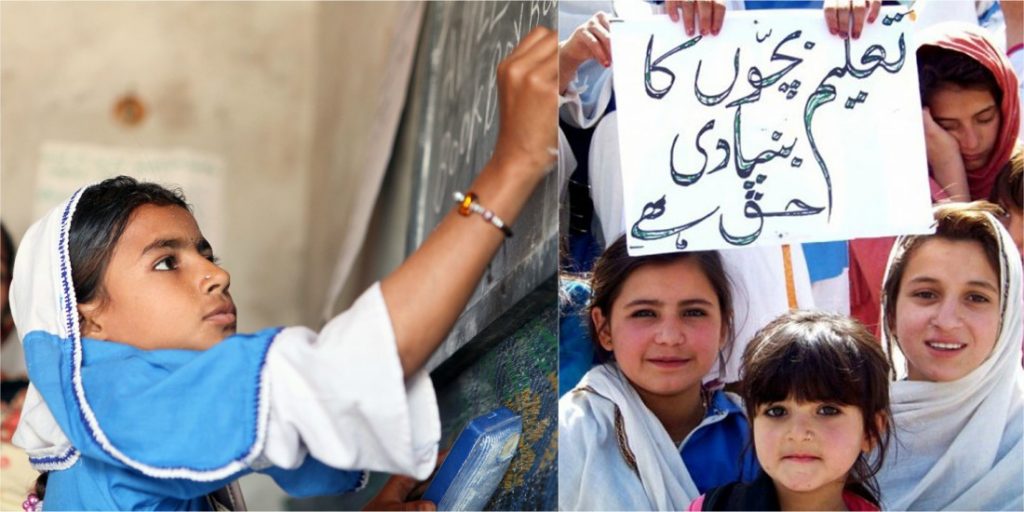Disclaimer*: The articles shared under 'Your Voice' section are sent to us by contributors and we neither confirm nor deny the authenticity of any facts stated below. Parhlo News will not be liable for any false, inaccurate, inappropriate or incomplete information presented on the website. Read our disclaimer.
This post is also available in: العربية (Arabic) اردو (Urdu)
Education is the pivotal component for the development of a nation. It is a universal tool to achieve both human and economic development. Islam the major faith of Pakistan has also shed light on its importance: “Are those who have knowledge equal to those who do not have knowledge?!” (39:9).
While our lame-duck government is concerned with its own survival, the education sector is alleviating in Pakistan. The literacy rate recorded in 2016 is 58%. In Pakistan, an estimated 25 million children are out of school, alarming indeed! The bifurcation of private and Government schools further soared the problem. Government schools are considered of ill repute.

Additionally, Government schools are URDU medium and many of the teachers are indecorous. On the contrary, private schools are better but expensive. Only affluent and higher middle class afford them, and the government has failed to achieve any mechanism of collaboration between the two sectors. Gender disparity is common in Pakistan. Most of the Hoi pollis do not allow girls to get an education.

Poverty, cultural constraints, illiteracy of parents and parental concerns about safety and mobility of their daughters are the main deterrents. The ratio of boys and girls in primary schools is 10:4. Terrorism struck the Education sector badly as it did with other sectors. according to the Global Terrorism Database, there were 867 attacks on educational institutions in Pakistan from 2007 to 2015, resulting in 392 fatalities and 724 injuries. In addition, Over 900 girls schools were forced to close and over 120,000 girls stopped attending school.
About 8,000 female teachers were driven out of work.For many the loss was permanent, they left studying for the rest of life. All of the above problems are obstacles which hinder Pakistan to achieve MDGs and Vision 2030 goals. However, these problems can be curbed if taken pragmatic steps. The allocation of funds for education are meager; only 2.5 % of total GDP, it needs to be enhanced. Pakistan should endorse the Safe Schools Declaration, a nonbinding political agreement opened for state support at an international conference in Oslo, Norway, on May 2015.
Furthermore, the Federal government should cooperate with provincial authorities as education falls under the provincial category of the NFC. The reforms for the betterment of education cannot be done by government alone. The amalgamation of private, public and government sectors would definitely ameliorate the issue.


